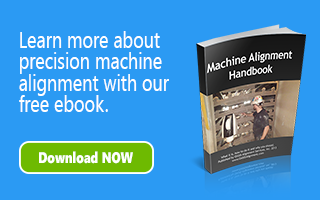Like most manufacturers, companies that produce building materials – shingles, wallboard, fiberglass, housewrap, flooring, as well as related products such as tubes and cores – can benefit greatly from the precision alignment of their production equipment. Higher operating efficiency, increased production rates, improved product quality and decreases in unplanned downtime and energy use are just some of the many benefits that are a result of precision aligned machine components and process lines.
In this post, we provide excerpts from our previous posts on machine alignment basics, the importance of machine alignment check-ups and several posts specifically for those of you in the building products industries.
Remember: almost all industrial manufacturing equipment needs – or will need – precision alignment during its lifetime. Performing regular maintenance inspections, correcting smaller alignment issues as they occur, and planning early for full alignment inspections and adjustments during scheduled outages, will all go a very long way towards keeping your production lines running smoothly and efficiently. This is especially true prior to times of high demand when speed and efficiency are critical and unplanned downtime is not an option.
Precision Alignment Can Help Roofing Manufacturers Avoid Costly Issues
Roofing production lines, like most large manufacturing process lines, rely on rolls, gears, motors, chains, drums, and cutters that must all work in unison to produce a quality finished product. Precision alignment – meaning level to earth and perpendicular or square to the overall machine centerline – in the major sections of the line will improve the life expectancy of components, reduce waste and product quality issues as well as, improve the line’s overall runnability. In this post, we provide an overview of some common misalignment symptoms and the probable causes to

Misalignment in the paper stand can cause missed or poor slices – leading to decreased uptime an/or decreased line speed
watch for in your roofing manufacturing line. . . READ MORE
The Importance of Gypsum Board Line Alignment – Part 1
As the construction industry (both residential and non-residential) continues to see an upturn, so too is the demand for gypsum board increasing. This rise in demand typically pressures board manufacturers to operate their lines at optimum production speed – with a minimum amount of downtime and product scrap. In this first post of a series on the importance of gypsum board line alignment, we provide an overview of the issues that can occur when there is misalignment within the line. In upcoming posts, we will provide tolerance guidelines and alignment inspection methods for gypsum board lines. . . READ MORE
The Importance of Gypsum Board Line Alignment – Part 2
In Part 2 of our series on Gypsum Board Line Alignment, we review the steps required to inspect and align a board line and provide a guideline for alignment tolerances. The first step in preparing for a gypsum board line alignment is to perform an overall machine/centerline survey. This survey captures the alignment condition of your board line in three dimensions by obtaining centerline data and level and square conditions on select components throughout the line. . . READ MORE
How to Align Machines – Getting Back to Basics
With many options in alignment tools and solutions available to manufacturers today, it is important to understand some basic principles of machine alignment so that you are making an informed decision when selecting the best solution for your particular machine or production line. Many of the costly equipment and product issues that manufacturers face on a day to day basis can be attributed to the misalignment of components within the process line. . . READ MORE
How Often Do You Need a Machine Alignment Inspection?

OASIS metrology engineer uses a laser tracker to inspect wallboard process line.
One of the questions OASIS customers most often ask is “How often do I need to have my machine inspected for alignment?” Unfortunately, there isn’t a simple answer. There are a number of factors that can affect the alignment of your equipment and these should be taken into consideration when creating a machine alignment inspection plan at your facility. In this post, we provide the top three factors that can determine how often alignment inspections are needed and discuss the reasons why there are no set rules that can be applied. . . READ MORE
If you would like more information on precision machine alignment and preventive maintenance programs, please contact us. Be sure to subscribe to our Industry Blog for regular updates on alignment methodologies, measurement tools and technologies, case studies and more.

